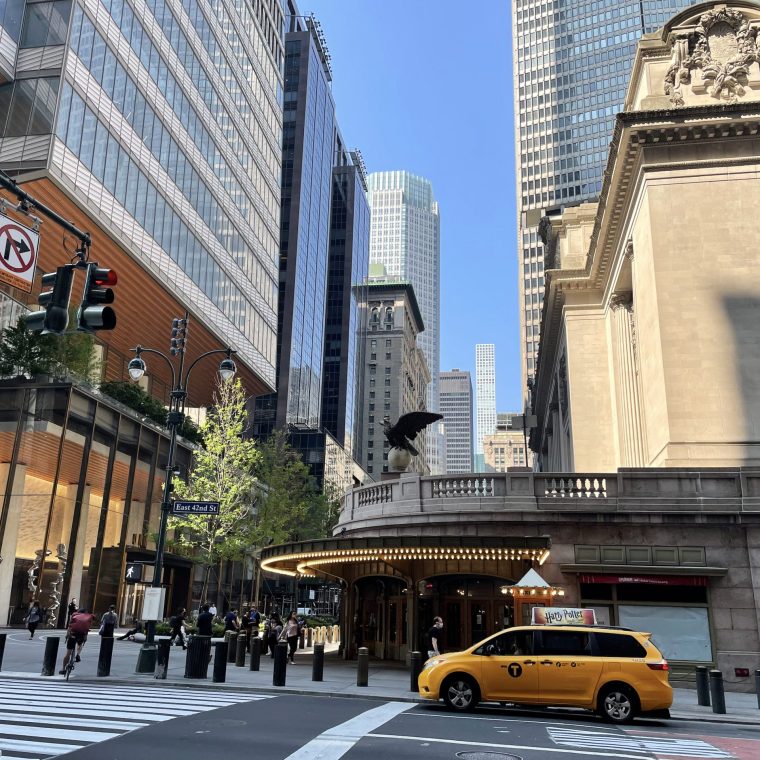The title of this post is a theory that did not originate with me, but which I think is reasonably accurate when discussing architecture. There is a feedback loop between actual designs of buildings and cities, and portrayals of design in various forms of art. I’m thinking of modern media – movies, for example – but there’s no reason to believe this was not true with paintings and engravings in the past. Simply put, architecture is a visual art for any building that you don’t personally use. I have not yet been inside One Vanderbilt, so I have nothing to say about how its lobby functions for visitors or tenants, how it smells, for its elevators feel when they accelerate, and so on. I only know how it looks from the nearby streets and from a distance. It is, for me at this time, a visual object in the same way that a sculpture is. Conversely, the Oculus at the World Trade Center happens to be on a convenient path for me when heading crosstown, so I’ve been in it many times regardless what I think of its design.
I had heard about this idea in college but first gave it real though a few years later, when I read that Fritz Lang had cited his first views of the skyscrapers of lower Manhattan as a major influence on his 1927 film Metropolis. The film is visually stunning, but ill-advised editing after its initial release had reduced it to complete incoherence; not until 2010 was it restored to something approaching Lang’s original conception. I find it impossible to watch the film and not see its influence on skyscraper design, creating a cycle of reality influencing art influencing reality. It’s easy to pick out other movies that have changed the way we see skyscrapers, starting with King Kong atop the Empire State Building, only six years later. The cycle is unlikely to end.
I took the picture above a week ago, looking north up Vanderbilt Avenue from 42nd Street, and it struck me how much that view looked like a set in a video game. The combination of the cloudless sky, the stark geometry of the buildings, the unusually (for New York) scarless asphalt of the street, and the relative lack of street signs makes it seem unreal somehow. I’m not saying I expected to see zombie hoards, but I’m not not saying it either.
From left to right: One Vanderbilt Avenue, the 1980s conversion of the Hotel Biltmore to offices, the Yale Club, 52 Vanderbilt Avenue, 383 Madison Avenue, some 1970s building that I don’t care about enough to identify, 432 Park Avenue, Pan Am/Met Life/Stark Tower/Avengers Tower, and Grand Central Terminal. The oldest of these is Grand Central, at 111 years; the newest is One Vanderbilt, which opened in 2021.



